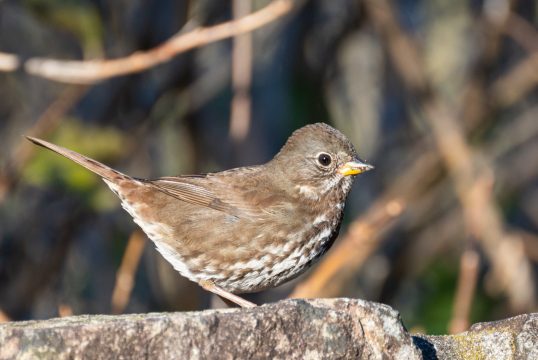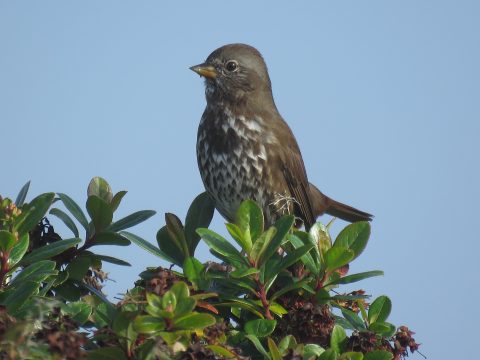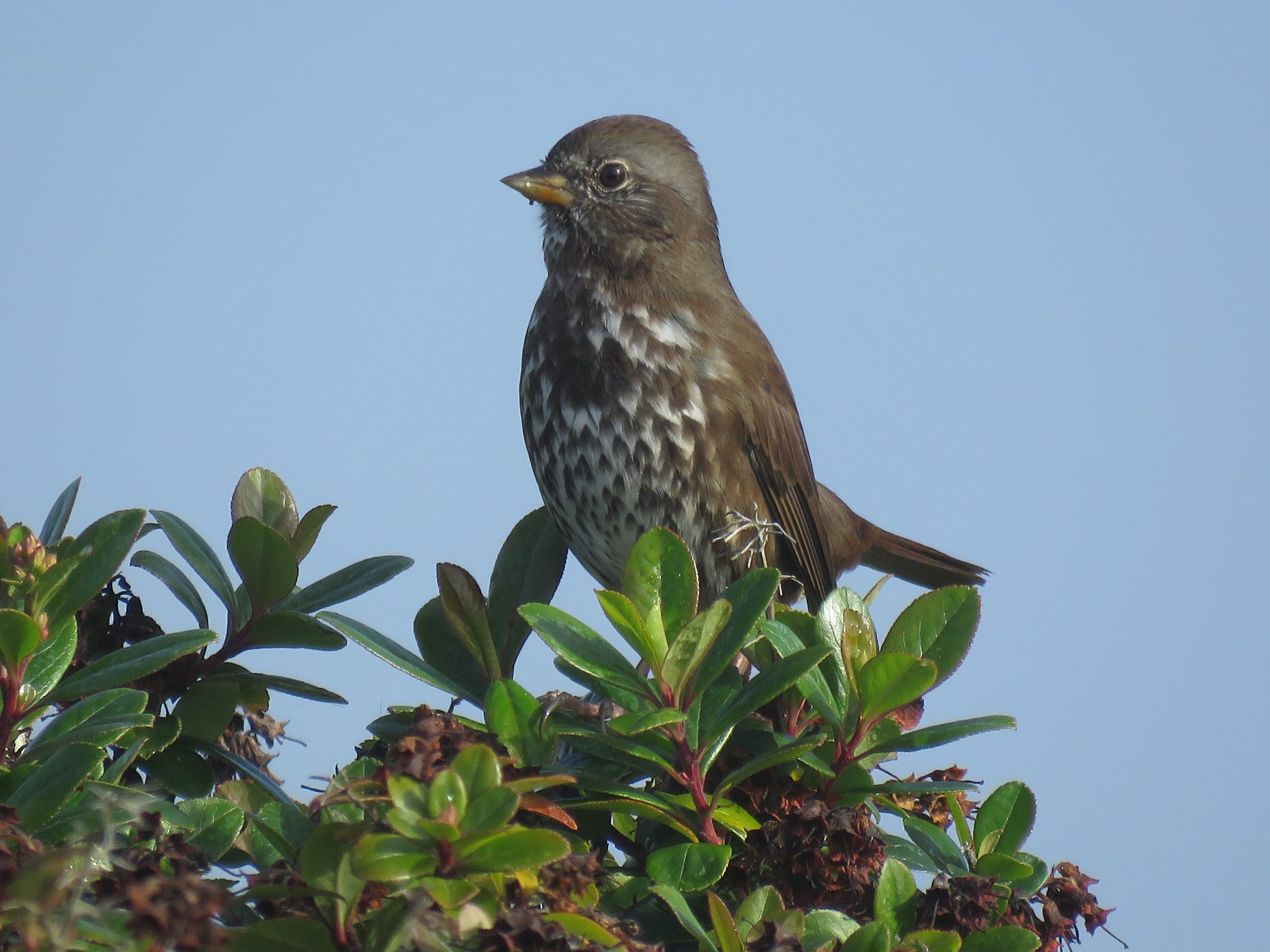Bird of the week: Fox Sparrow
About: Fox Sparrows are plump brownish birds with white checkering on the underside and a dull yellow beak. There are four distinct subspecies which vary in color from a reddish brown (the “Red” Fox Sparrow, found primarily in the east) to brown with a grayish head.
Where to find this bird: Look for this bird in the Slug Garden or in other brushy areas around campus.
When to find this bird: March – April and October – early December, with a few birds lingering into January.
Fun fact: Fox Sparrow fossils have been discovered from the Pleistocene era, roughly 11,000 years ago.


CBCs — The best part of Christmas
When I was a kid, I looked forward to Christmas for months wondering what I might find under the Christmas tree or in my stocking.These days, though, my anticipation for the Christmas season revolves around the CBCs I will attend. CBC stands for Christmas Bird Count, which is a Western-hemisphere-wide, century-long citizen-science project founded in 1900 and run by the National Audubon Society. Christmas Bird Counts happen throughout the country from December 14 – January 5. They take place in count circles — a 15 mile diameter centered around a given location. Many counts are centered around towns and cities or National Wildlife Refuges. Participants from diverse ages and skill levels split up into teams to bird in different sections of the count circle. They count every bird they see all day and traditionally, at the end of their day, they get together for dinner and go over their sightings. All the sightings go into a database that researchers use to understand winter bird populations. With over 2,000 CBC circles, many of which have run for decades, they also function as annual social gatherings, allowing veteran birders to meet and exchange old stories and for newer birders to meet and learn from more experienced individuals.
I did my first Christmas Bird Count just after my 13th birthday. My best friend and I joined two local ornithology grad students to cover our sector and I was amazed by the number of birds we saw; we even got access to the local airport to watch Short-eared Owls as they left their roost at night. While driving in, we spotted two Snow Buntings in our headlights, which are very rare in my area, and on our way out we almost ended up on the runway — just don’t tell my parents!
From that point on I was hooked. I’ve since participated in multiple counts every year and now run my own count based in Newport, Oregon, which regularly gets over 140 species. With a few dozen observers in the field checking spots that are not always birded, CBCs consistently turn up rare — and sometimes extremely rare — birds. In the past, the news about a rarity would only break at end of the day and birders would chase it the next day, but these days with eBird and mass texting, the word gets out immediately. Even if we aren’t in the group that finds a rarity, we typically hop in the car and poach it (meaning we leave our sector to bird in someone else’s) before we continue with our count. I may be in the minority, but I just can’t wait to get out again — likely in the cold pouring rain — to do more CBCs this holiday season.

